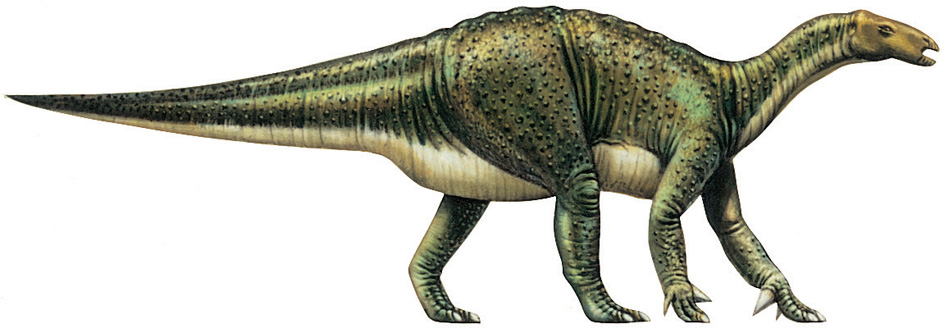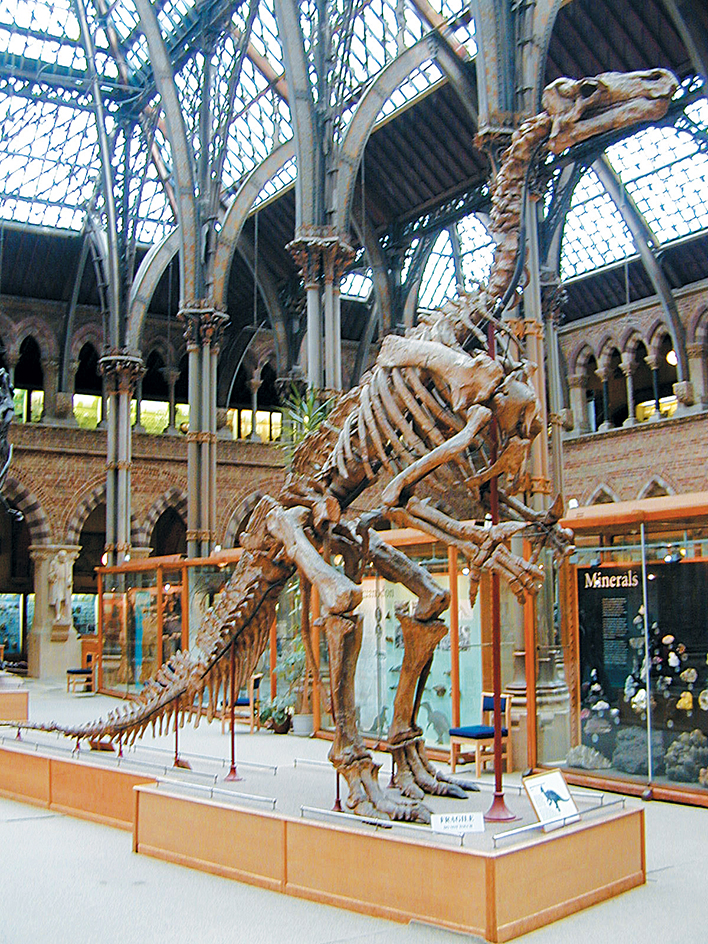Iguanodon << ih GWAN uh dahn >> was one of the first dinosaurs discovered. Mary Ann Mantell found Iguanodon teeth in Sussex, England, in 1822. Her husband, amateur geologist Gideon Mantell, gave the dinosaur its name in 1825. Iguanodon means iguana tooth. Mantell believed the dinosaur’s teeth resembled those of modern iguanas.

Iguanodon was a large plant-eating dinosaur. The animal grew about 30 feet (9 meters) long. It weighed from 4 to 5 tons (3.6 to 4.5 metric tons). It used its horny beak and strong teeth to chop and grind up plants. Iguanodon‘s arms were shorter than its long, muscular hind legs. Its five-fingered hands had a cone-shaped spike on each thumb. Scientists believe the dinosaur used its spikes to defend itself. It also used the spikes to direct tree branches toward its mouth. Iguanodon also had three hoofed toes on each foot. Large adults walked on all fours. Smaller, younger animals could travel on two legs. The dinosaur’s long tail provided balance.

Iguanodon lived about 135 million to 125 million years ago, during the early part of the Cretaceous Period. Scientists have found its fossils on every continent except Antarctica. Some expeditions have uncovered large bone beds containing dozens of Iguanodon fossils. These findings suggest that the animal lived in herds.
